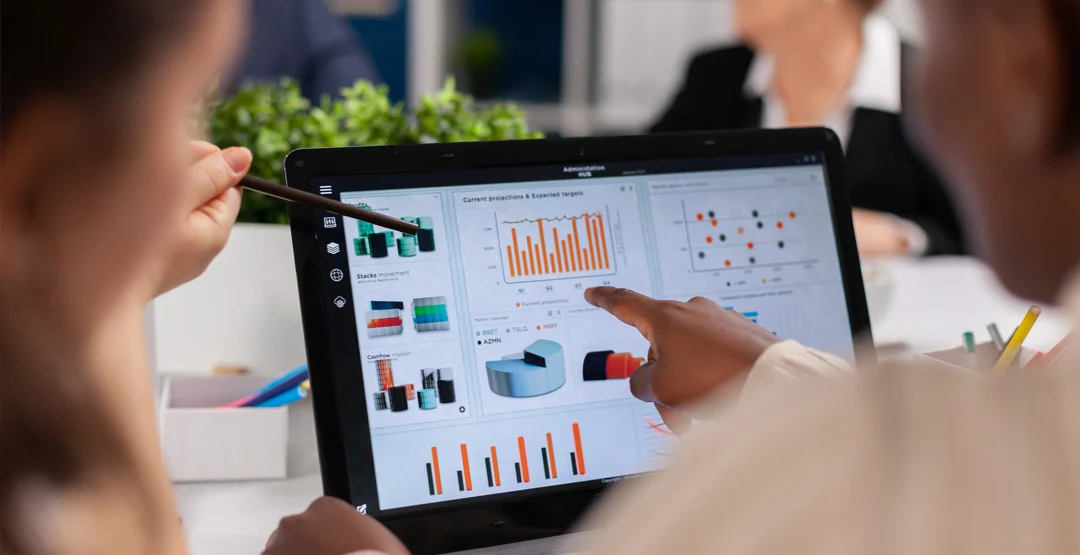Strategic Vendor Management: The Key to Enhancing Your IT Strategy
Reading Time: 8 mins
“Discover the keys to optimizing resources, reducing risks, and driving innovation through effective supplier management aligned with your strategic goals.”
In today’s dynamic technological landscape, strategic supplier management has become a fundamental pillar, not only for gaining a competitive advantage but also as an essential requirement for any organization aspiring to operational excellence and staying at the forefront of innovation. Effective supplier management enables businesses to capitalize on external expertise, innovation, and resources, driving significant technological advancements, optimizing operations, and ultimately achieving business strategic goals. In contrast, the absence of proper management can expose companies to considerable risks, such as delays in critical project deliveries, unexpected cost increases, a decrease in service or product quality, and a consequent loss of stakeholder satisfaction, both internal and external. This scenario underscores the critical importance of integrating supplier management into the core of the IT strategy, thus building an agile, resilient organization prepared to face future challenges.
Supplier Management: An Integrated Strategic Approach
Supplier management covers the entire lifecycle, from careful initial selection to formal offboarding, with a strong emphasis on establishing and maintaining effective relationships with suppliers who directly contribute to IT strategy and overall business operations. This approach goes beyond tactical and administrative tasks, such as contract management and reporting, to become an essential strategic capability for achieving business objectives. Key elements of strategic supplier management include:
1. Strategic Selection and Contracting
The foundation of a successful relationship with a supplier starts with rigorous selection. This process involves identifying and evaluating suppliers who not only meet immediate technical and operational requirements but also align with the organization’s long-term strategic needs. Critical factors such as the supplier’s financial stability, market reputation, ability to innovate and adapt to new technologies, commitment to product or service quality, and cultural compatibility with the company are thoroughly assessed. Contracting, in turn, should be a transparent and fair process that clearly defines the terms and conditions of the relationship, including service levels, delivery timelines, responsibilities, and dispute resolution mechanisms.
2. Contract Management and Continuous Performance Monitoring
Once a supplier is contracted, contract management becomes a key pillar. This involves implementing a robust system that facilitates the management of each contract attribute, from tracking milestones and deliverables to managing changes and renewals. Simultaneously, it is crucial to establish a system for continuous performance monitoring to ensure the supplier delivers high-quality results and remains aligned with the established IT objectives. This monitoring should include setting clear and objective performance metrics (KPIs), conducting periodic joint reviews, and maintaining open and proactive communication between both parties to address any deviations or areas for improvement.
3. Financial and Budget Management
Financial and budget management is a vital component that should be integrated into all stages of supplier management. It encompasses planning, controlling, and managing the financial resources allocated to supplier relationships. This includes creating detailed budgets, closely monitoring actual expenses versus the budget, managing invoices and payments efficiently, and analyzing the return on investment (ROI) of each supplier relationship. Effective financial management ensures cost optimization, adherence to allocated budgets, and maximization of the value obtained from each investment.
4. Collaboration and Joint Innovation
Strategic supplier management aims to foster a collaborative innovation ecosystem. This involves working closely with suppliers to overcome technological challenges, identify new business opportunities, and create added value for the organization. Actively promoting the exchange of knowledge and best practices, participating in joint research and development projects, and seeking innovative solutions that drive mutual growth and adaptation to a constantly evolving market are key aspects of this approach.
How Supplier Management Drives IT Strategy
Effective supplier management can act as a powerful catalyst for the success of IT strategy by enabling:
- Optimizing Capabilities and Maximizing Efficiency: Strategically integrating suppliers into the organization’s internal processes and systems can significantly improve operational performance. Suppliers can provide specialized knowledge, advanced technologies, and best practices that optimize workflows, reduce costs, and improve overall efficiency.
- Fostering Continuous Innovation: Working collaboratively with suppliers opens the doors to a constant flow of ideas and innovative solutions. Suppliers, being at the forefront of new technologies and market trends, can provide valuable insights and help the organization adapt quickly to a constantly changing business environment.
- Aligning Goals and Vision: It is essential to ensure that suppliers understand and share the organization’s vision, mission, and strategic goals. This alignment guarantees that both parties’ efforts are directed toward the same objective, maximizing the value of the relationship and contributing to the overall success of the business.
Is the IT strategy aligned with the business strategy?
Key Steps for Strategic Supplier Management
To maximize the positive impact of supplier management, businesses must adopt a proactive, collaborative, and strategic approach by following these steps:
1. Define a Clear and Concise Supplier Strategy
The first step is to establish a clear vision for supplier management, defining the roles and responsibilities of each party, the processes to follow, and the key metrics for measuring success. This strategy should align with the organization’s overall strategy and specific IT objectives.
2. Implement a Strong Governance Framework
An effective governance framework provides the structure and mechanisms needed to ensure continuous alignment with IT strategy. This includes developing clear policies and procedures, defining roles and responsibilities, implementing control systems, and creating effective communication channels.
3. Practice Continuous Management and Ongoing Improvement
Supplier management is not a one-time event but a continuous process that requires constant monitoring, periodic evaluation, and open communication. Mechanisms should be established to gather feedback from both parties, identify areas for improvement, and promote continuous innovation.
The Central Role of the Vendor Manager Officer (VMO) in the Organizational Structure
Effective supplier management requires a well-defined organizational structure that facilitates collaboration and communication between the various areas involved. The Vendor Manager Officer (VMO) plays a central role in this structure, acting as the primary point of contact and coordination for all supplier-related activities. The following diagrams illustrate two perspectives of this structure:

Risk Management and Compliance in Supplier Management
Risk management is an essential component of a strong supplier management strategy. It involves identifying, assessing, and proactively mitigating risks associated with supplier relationships. These risks can span various areas, including:
- Financial Risks: Payment defaults, supplier financial instability, price fluctuations.
- Operational Risks: Supply chain disruptions, delivery delays, quality issues.
- Legal and Compliance Risks: Breach of contracts, regulatory violations, intellectual property issues.
- Reputation Risks: Damage to the company’s image due to issues with a supplier.
The Importance of Contract and Performance Management
Contract management and performance monitoring are two fundamental pillars for the success of supplier management. Good contract management involves:
- Effective Negotiation: Achieving the best possible terms and conditions.
- Clear and Precise Drafting: Defining each party’s obligations clearly.
- Execution and Monitoring: Ensuring the fulfillment of agreements.
The Role of IT and Procurement and Automation
The IT department plays a crucial role in providing the tools and infrastructure needed to automate processes in supplier management. The use of specialized software, such as HOLO VMO (mentioned at the end of the original article), enables the centralization of supplier information, automates tasks such as contract management and performance tracking, and generates reports for decision-making.
The Procurement department, for its part, is responsible for centralizing acquisitions, optimizing costs through negotiations for better prices and conditions with suppliers, and ensuring compliance with the organization’s procurement policies.
Conclusion
In summary, strategic supplier management is a key differentiator for organizations seeking to maximize operational efficiency, foster innovation, and transform supplier relationships into a competitive advantage. Implementing a clear model like the Vendor Management Office (VMO) helps optimize processes, mitigate risks, and ensure compliance with quality standards.
At RD-ITS, we design and implement VMO models tailored to each company’s specific needs, ensuring efficient management aligned with strategic goals. Additionally, our HOLO VMO solution complements this approach by automating key processes, providing complete visibility of the supplier lifecycle, and promoting collaboration across departments.
Transform your IT strategy and take your supplier management to the next level with RD-ITS and HOLO VMO. Contact us today and discover how we can help you.
Do you know how IT can help you achieve your business goals?

